Introduction
Are Rabbits Color Blind: Rabbits are not completely color blind, but their vision is different from that of humans. They have what is known as dichromatic vision, meaning they primarily perceive two main colors: blue and green. Their eyes are not as sensitive to reds and oranges as human eyes are. This is because rabbits possess only two types of color-sensitive cones in their retinas, as opposed to humans who have three.
The dominant colors in a rabbit’s visual world are those in the blue and green spectrum. Reds and oranges appear more muted or even grayish to rabbits. This adaptation is believed to be associated with their natural habitat and lifestyle. In the wild, rabbits color need to be able to spot predators and sources of food quickly, which often involves detecting movement rather than detailed color differences.
It’s also important to note that the specifics of rabbit vision can vary slightly among different species and individual rabbits. Nonetheless, while rabbits might not see the world in the same vibrant hues as humans do, they have adapted to their environment with a unique visual perception that suits their needs.
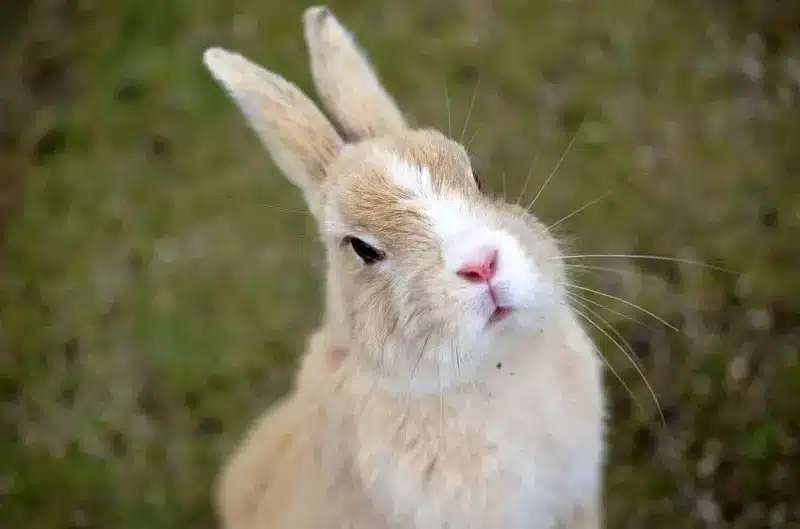
What colors can rabbits see?
Evidently, they can discriminate between the wavelengths we call “green” and “blue.” Although rabbits may not perceive green and blue the way we do, they *can* tell them apart. This means they have limited color vision, probably conferred by two different categories of cone cells (blue and green).
The Basics of Rabbit Vision
Rabbits, like many other animals, have evolved to have a vision system that aligns with their ecological niche and behaviors. Their vision is primarily adapted for survival in the wild, where they need to be attuned to certain visual cues for finding food, detecting predators, and navigating their environment.
Limited Color Palette
While humans are trichromatic, meaning we have three types of color receptors (cones) in our eyes that are sensitive to red, green, and blue wavelengths of light, rabbits have a more limited color palette. They are considered dichromatic, which means they have two types of color receptors.
Rabbits’ color vision is centered around the blue and green parts of the spectrum. They are particularly sensitive to shorter wavelengths of light, which include blues and some greens. However, they have difficulty distinguishing between colors in the red part of the spectrum. This means that colors such as red, orange, and pink may appear more subdued or even gray to rabbits.
The World Through Rabbit Eyes
To visualize how rabbits perceive colors, imagine a world where the reds are muted, and greens and blues dominate the scene. Colors like grass and foliage might stand out more vividly to rabbits, aiding them in foraging and avoiding potential threats. This visual acuity aligns well with their natural habitat, as the coloration of vegetation often falls within the blue and green spectrum.
Interestingly, rabbits also have a higher sensitivity to movement, which is critical for detecting predators. Their eyes are positioned on the sides of their heads, providing them with a wide field of view—nearly 360 degrees. This design helps them spot even subtle movements from various angles, making them less vulnerable to surprise attacks.
Adaptations for Survival
Rabbits’ vision system is a remarkable adaptation that helps them survive and thrive in their environment. While their color vision might be limited compared to humans, their ability to perceive movement and their wide field of view offer a unique perspective on the world. It’s a testament to the intricate ways in which different species have evolved to perceive their surroundings based on their ecological needs.
What Colour can rabbits not see?
Compared to humans, rabbits have more rods than cones in their retinas. This means rabbits can see better than we can in the dark but are limited to two-color vision. For example, they can distinguish between green and blue but cannot see red. Rabbits aren’t the only animals that have trouble distinguishing colors.
The Missing Piece: Reds and Oranges
Unlike humans who have three types of color receptors (cones) sensitive to red, green, and blue wavelengths of light, rabbits are dichromatic. This means they have only two types of cones and are primarily sensitive to blue and green wavelengths. Regrettably, the colors that fall in the red and orange range of the spectrum are largely absent from the visual repertoire of rabbits.
Rabbits lack the cone receptors that would enable them to perceive the longer wavelengths associated with red, orange, and certain shades of pink. Consequently, these colors may appear muted, dull, or even gray to rabbits. The intricate interplay of colors that humans enjoy, such as a vibrant sunset or the deep red of a rose, remains hidden from the rabbit’s visual experience.
A Dichromatic World
For rabbits, their environment is predominantly composed of shades of blue and green. Lush grass, verdant foliage, and the expanse of the sky would be the key visual elements that stand out in their world. This adaptation is closely tied to their natural habitat and lifestyle. Being prey animals, their visual system is tailored for detecting motion and identifying potential threats quickly, rather than for distinguishing an array of colors.
An Evolutionary Perspective
The limitations of rabbit color vision offer an intriguing glimpse into their evolutionary journey. As creatures shaped by their ecological roles, rabbits have evolved to prioritize aspects of their environment that are most relevant to their survival. While their visual experience may seem restricted to human observers, it is a testament to their successful adaptation to their surroundings.
The Unseen Beauty
Understanding what colors rabbits cannot see broadens our appreciation for the diversity of life on Earth. It reminds us that the perception of color is far from universal and that various species have developed unique ways to navigate their worlds. While rabbits may not revel in the fiery hues of a sunset, they perceive a world that caters to their needs in a way that’s just as enchanting.
What Colour do rabbits like?
Offering red carpets, cushions, or blankets to your rabbit allows them to seek out this vibrational energy whenever they need it. In my work with rabbits and other animals, it’s very evident that they love to lie on the red when they lack regular contact with the outdoors. In contrast to red, blue is cooling.
Shades of Greens and Blues
Rabbits are inherently drawn to colors that align with their natural habitat and lifestyle. Their dichromatic vision, focused on blue and green wavelengths, makes them particularly attuned to these shades. Lush green grass and the vibrant foliage of their surroundings stand out prominently in their eyes. These colors hold a practical significance as well since they are associated with the vegetation that constitutes a major part of their diet.
Camouflage and Concealment
In the wild, rabbits’ survival hinges on their ability to blend into their environment and evade predators. Their preference for green and blue tones might also reflect their need for effective camouflage. The colors that surround them play a crucial role in keeping them hidden from predators, allowing them to go about their activities without drawing unwanted attention.
Calming and Comforting Hues
Rabbits, often known for their skittish nature, may also find comfort in colors that don’t cause unnecessary stress. Earthy tones like browns and muted greens could create an environment that feels secure and familiar to them. These colors mirror the natural surroundings where they typically thrive, providing a sense of tranquility.
Contrasting Elements
While rabbits are more sensitive to blue and green hues, their visual perception also involves detecting contrasts. Colors that stand out distinctly against their predominant surroundings might capture their attention. For instance, a bright or differently colored object in a sea of greens could pique their curiosity, triggering their natural exploratory instincts.
Personal and Individual Preferences
As with any living beings, individual preferences among rabbits can vary. Some rabbits might show more interest in certain colors based on their past experiences or personality traits. Just like humans, rabbits have their distinct personalities, and their preferences could be influenced by their unique characteristics.
Can my rabbit see me?
Rabbits can see all around them without turning their head at all. This includes being able to see any predators sneaking up behind them. In fact, rabbits have an almost 360 degree field of vision, including the area above their head. They only have one blind spot, located directly in front of their nose.
Limited Color Spectrum
Rabbits, unlike humans, have a dichromatic vision, primarily sensitive to blue and green wavelengths. This means their perception of colors is different from ours. Reds and oranges, for instance, might appear muted or even gray to them. However, they are quite adept at differentiating between various shades of blue and green.
Detection of Movement
Rabbits have evolved to be finely attuned to movement, a crucial survival skill in the wild. Their eyes are positioned on the sides of their heads, allowing them an almost panoramic view of their surroundings. This design is ideal for spotting predators from various angles. Consequently, any movement you make around your rabbit is likely to capture its attention, whether it’s your approach, gestures, or actions.
The Importance of Gestures
While the specifics of your rabbit’s visual perception might differ from yours, they can still gather valuable information from your gestures and movements. Rabbits are skilled at reading body language, and they can sense your intentions based on how you approach them. For instance, if you approach your rabbit slowly and calmly, it’s likely to interpret this as non-threatening behavior. Conversely, sudden and erratic movements might cause stress or alarm.
Establishing Trust
Your rabbit’s ability to perceive you extends beyond just visual cues. Their sense of smell and hearing play significant roles in recognizing you as well. By consistently interacting with your rabbit in a gentle and positive manner, you’re building a sense of familiarity and trust. Over time, your rabbit will associate your presence with safety and care.
Eye Contact and Trust-Building
Direct eye contact can have varying effects on rabbits. While it’s not recommended to maintain prolonged eye contact with a rabbit you’re not familiar with, as it might perceive this as a threat, your pet rabbit can become accustomed to your gaze over time. As trust builds, your rabbit might interpret gentle eye contact as a form of bonding.
Can rabbits see in dark?
Rabbits can see in the dark. Because they are crepuscular – meaning that they are most awake and alert at dawn and dusk – rabbits have evolved to see very well in low-light conditions. This helps them to forage for fresh grasses and weeds, even while the sun is barely up.
Crepuscular Nature
Rabbits are actually crepuscular creatures, which means they are most active during the hours around dawn and dusk. This behavioral pattern aligns with the moments when natural light levels are transitioning from day to night and vice versa. While they may not possess specialized adaptations for navigating complete darkness like truly nocturnal animals, rabbits have developed certain visual capabilities that aid them during these dimmer periods.
Night Adaptation
Rabbits have large eyes relative to their head size, and their retinas are densely packed with rod cells. Rod cells are photoreceptor cells responsible for low-light vision. This adaptation allows rabbits to gather and process more available light, enabling them to see better in low-light conditions compared to humans. While they might not see as clearly in complete darkness as animals with night vision, rabbits are relatively adept at perceiving shapes and movement in dim lighting.
Tapetum Lucidum
One of the key features aiding rabbits in low-light situations is the tapetum lucidum, a layer of cells located behind the retina. This layer reflects light back through the retina, giving photoreceptors a second chance to detect the light. This reflective mechanism enhances the efficiency of their low-light vision, allowing them to make the most of the available ambient light.
The Twilight Advantage
Rabbits’ crepuscular nature grants them an advantage during the transition between day and night. Their eyes are designed to handle changing light levels effectively, giving them an edge in detecting movement and potential threats during these times. This adaptation is particularly useful in the wild, where predators might be active during twilight hours.
Limitations in Complete Darkness
While rabbits possess remarkable adaptations for low-light vision, their abilities do have limitations. In conditions of absolute darkness, their vision would be severely compromised. They heavily rely on available ambient light to navigate their surroundings effectively.
How good is rabbit eyesight?
The eyes are placed high and to the sides of the skull, allowing the rabbit to see nearly 360 degrees, as well as far above her head. Rabbits tend to be farsighted, which explains why they may be frightened by an airplane flying overhead even if their human companion can barely see it. (It could be a hawk!
Dichromatic Vision
Unlike humans, who are trichromatic and can perceive a wide range of colors due to three types of color receptors (cones) in our eyes, rabbits are dichromatic. This means they have only two types of cones and a more limited color spectrum. Their primary sensitivity is to blue and green wavelengths of light. Reds, oranges, and certain shades of pink are largely absent from their color palette, appearing as muted or even gray tones.
Adaptation for Survival
Rabbit eyesight is intricately connected to their evolutionary adaptations for survival. As herbivores and often prey animals, rabbits have evolved to prioritize visual cues that help them identify food sources, detect predators, and navigate their environment efficiently.
Enhanced Night Vision
Rabbits possess a heightened ability to see in low-light conditions, which is particularly useful during their crepuscular activity periods around dawn and dusk. Their eyes are equipped with a high number of rod cells, specialized photoreceptor cells responsible for vision in low-light conditions. Additionally, the tapetum lucidum—a reflective layer behind the retina—boosts their ability to gather and process available light, enhancing their night vision.
Wide Field of View
Rabbits’ eyes are positioned on the sides of their heads, providing them with a wide field of view. This panoramic vision is advantageous for detecting movement from multiple angles, a crucial skill for prey animals attempting to evade predators. However, this positioning results in a small binocular overlap, affecting their depth perception and ability to focus on objects directly in front of them.
Depth Perception and Focus
Rabbit eyesight excels in detecting movement but is less precise when it comes to depth perception and focusing on stationary objects. Their large eyes and positioning limit their ability to converge their vision on a single point, making it challenging to judge distances accurately.
What color is a lucky rabbit?
Lucky colors: red, pink, purple, blue. Lucky flowers: plantain lily, jasmine. Lucky directions: east, south and northwest. Lucky months: the 1st, 4th, 8th, and 11th Chinese lunar months.
Cultural Symbolism
Colors have played a significant role in cultural symbolism for centuries. In some cultures, certain colors are believed to bring luck, protection, or blessings. For rabbits, the color white is often associated with luck and purity in many societies. White rabbits have been linked to good fortune in various folklore and traditions, perhaps due to the rarity of their coloration in the wild.
White Rabbits: A Symbol of Luck
White rabbits have captivated human imagination, appearing in stories, myths, and cultural tales as symbols of luck and positive outcomes. The idea of a white rabbit as a guide or messenger of fortune can be traced to different cultures. In some Asian cultures, for example, the white rabbit is associated with the Moon and lunar symbolism, often seen as an auspicious sign.
Variability in Interpretation
While white might be a commonly considered lucky color for rabbits, interpretations of luck can vary widely based on cultural contexts. In some cultures, black rabbits might be considered lucky due to their rarity and the association of black with mystery and protection against negativity. Other colors, such as gold or orange, could also be considered lucky in certain cultures due to their connection with wealth, prosperity, and positive energies.
Personal Beliefs and Superstitions
Personal beliefs and superstitions also contribute to the notion of lucky colors for rabbits. Individuals might assign lucky colors based on their own experiences or beliefs. For instance, someone who has had positive interactions with a rabbit of a specific color might consider that color lucky for rabbits.
The Rabbit’s Perspective
It’s important to note that from a rabbit’s perspective, color symbolism and concepts of luck are not relevant. Rabbits perceive the world primarily through their own visual adaptations, and their understanding of color is limited to their dichromatic vision focused on blue and green wavelengths.
What do rabbits love the most?
Rabbits love nothing more than having the space to run around, play, dig and explore while enjoying a bit of ‘me’ time. Show your bunnies you love them by offering a secure environment where they can display these natural behaviours safely away from predators. A happy rabbit is a loved rabbit!
Social Interaction
Rabbits are social animals by nature. They thrive in the company of their own kind or, in many cases, with humans who provide them with love and attention. Regular interaction, such as petting, grooming, and even gentle conversations, can strengthen the bond between you and your rabbit. Many rabbits enjoy being around people, especially when they’re treated with kindness and respect.
Enriching Environments
Creating an engaging and stimulating environment is essential for a happy rabbit. Rabbits are naturally curious and energetic, and they love exploring their surroundings. Providing a variety of toys, tunnels, and hiding spots not only keeps them physically active but also mentally stimulated. Cardboard boxes, wooden chew toys, and items that encourage problem-solving can keep a rabbit entertained for hours.
Safe Spaces
Just as rabbits love to explore, they also cherish having safe retreats. In the wild, they rely on burrows for protection, and this instinct carries over into domestic settings. Offer your rabbit a cozy hideaway—a cardboard tunnel, an enclosed space, or a small wooden house—where they can retreat when they want to feel secure or rest.
Tasty Treats
Like many animals, rabbits have their favorite treats. Fresh fruits and vegetables, in moderation, can be a real treat for them. Leafy greens like kale, parsley, and romaine lettuce are often favorites. However, be cautious about introducing new foods to their diet, as rabbits have sensitive digestive systems. Always consult a veterinarian before adding new treats to their menu.
Grooming and Bonding
Rabbits are meticulous groomers and often appreciate gentle grooming from their owners. Brushing their fur not only helps keep it healthy but also strengthens the bond between you and your rabbit. Many rabbits find grooming sessions calming and enjoyable, particularly when done in a gentle and affectionate manner.
Consistent Routine
Rabbits are creatures of habit, and they tend to thrive in an environment with a consistent routine. Regular feeding times, play sessions, and interactions help them feel secure and content. A stable routine reduces stress and allows your rabbit to anticipate and enjoy their daily activities.
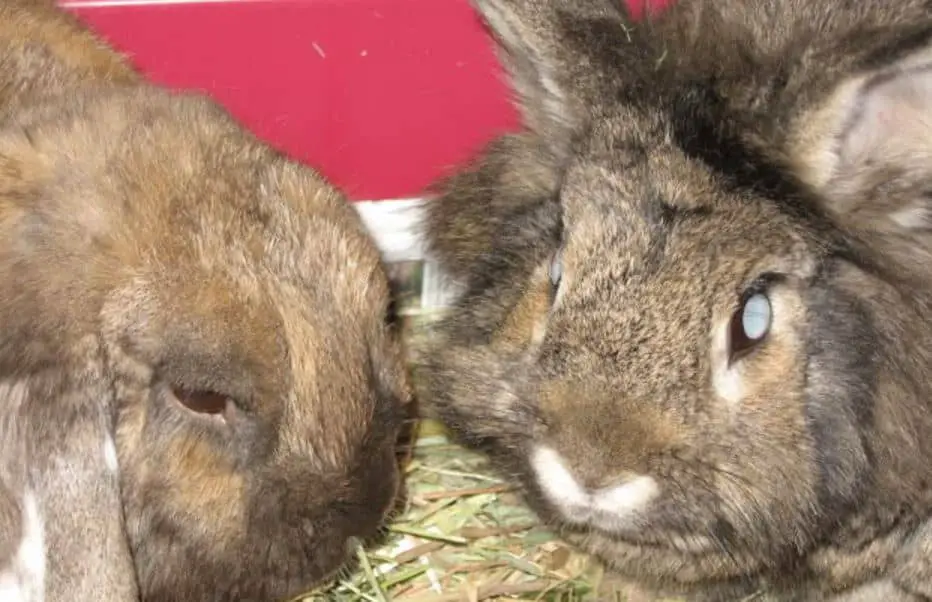
Conclusion
rabbits are not color blind, but their vision differs significantly from that of humans. They possess dichromatic vision, primarily perceiving blue and green colors while having reduced sensitivity to reds and oranges. This adaptation is well-suited to their natural habitat and lifestyle, helping them detect movement and potential threats efficiently. While their perception of the world might not mirror our own, rabbits have evolved with a distinct visual system that aids them in surviving and thriving in their environment. Understanding these nuances in rabbit vision enhances our appreciation for the diverse ways in which animals experience the world around them.
Rabbits have a wide field of vision, approximately 360 degrees, which means they can see almost all around them without having to move their heads. This is an essential adaptation for detecting predators and danger from various angles.While rabbits have reduced color sensitivity, they excel in low-light conditions. They have a higher number of rod cells in their retinas, which are responsible for detecting light and motion. This adaptation is helpful for their crepuscular nature, as they are most active during dawn and dusk.Rabbits are highly sensitive to flickering light, which is why they might become agitated or stressed in environments with rapidly changing lighting conditions, such as those caused by television screens or fluorescent lights.
Some research suggests that rabbits might have some sensitivity to ultraviolet (UV) light. This sensitivity could aid them in distinguishing certain patterns or markings on plants and other objects that are otherwise invisible to humans.Rabbits have a relatively wide-set eye placement, which provides them with a degree of binocular vision. This gives them depth perception and helps them judge distances accurately.
A rabbit’s visual system is adapted to its natural habitat. For instance, wild rabbits often inhabit open areas where detecting movement is crucial. Their visual acuity for detail might not be as high as humans’, but their ability to detect motion and navigate their environment is highly developed. Domesticated rabbits might have slightly different visual traits due to selective breeding and altered living conditions. Some breeds may exhibit variations in color perception and sensitivity to light.

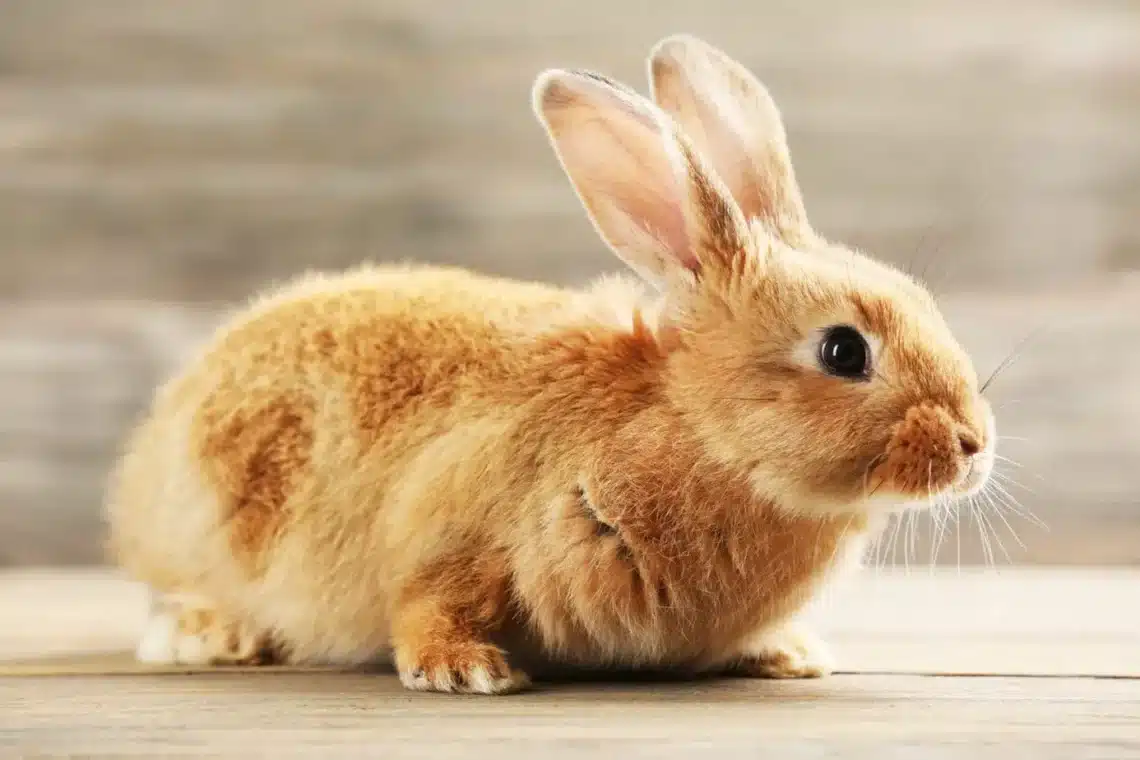
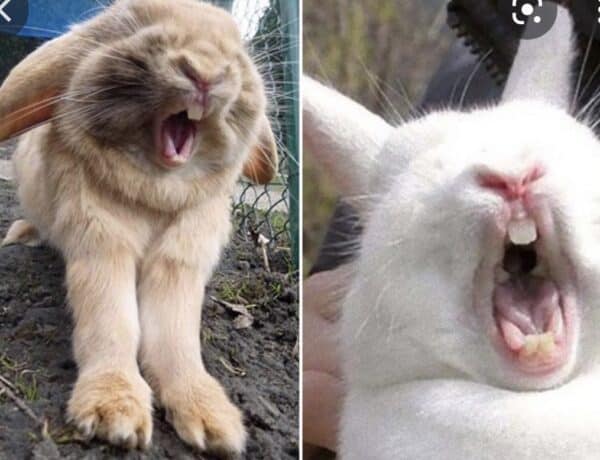
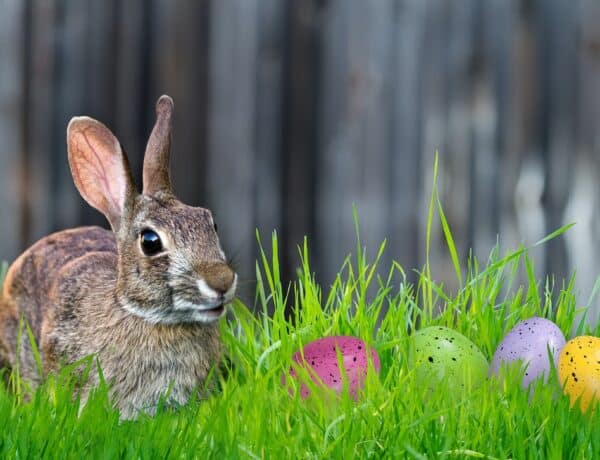

No Comments